C
cowboyjoe
17 years ago
The tire went flat on my wheelbarrow, and came loose from the rim. I
have tried everything to get that tire inflated, but can not get it to
seal well enough around the rim to be able to get the air to start
filling it. There's got to be some sort of trick to this. Anyone
know? The tire is not bad, it just wont expand to the rim. I have
tried to lean on it, work it against the rim with my hands (I can get
one side on the rim, but not the other), and even tried to tie a rope
tightly around it. I never have this much trouble with car tires as I
am with this stupid little tire.
Joe
Loading thread data . ..
M
m Ransley
17 years ago
Put an inner tube in it or take it to a service station or tire shop a large compressor can usualy put out enough air fast enough to blow it in shape
J
JimL
17 years ago
1. Remove the valve stem to increase the volume of air going into the tire. 2. Clean throughly and then swab soapy water all the way around the rim and tire. 3. Wrap a 15 foot long cord or rope around the middle of the tire and pull tight so the tire collapses from the rope. This forces the tire edge to touch the soapy rim edge. You will need hitch loop in the rope to pull tightly enough to collapse the tire.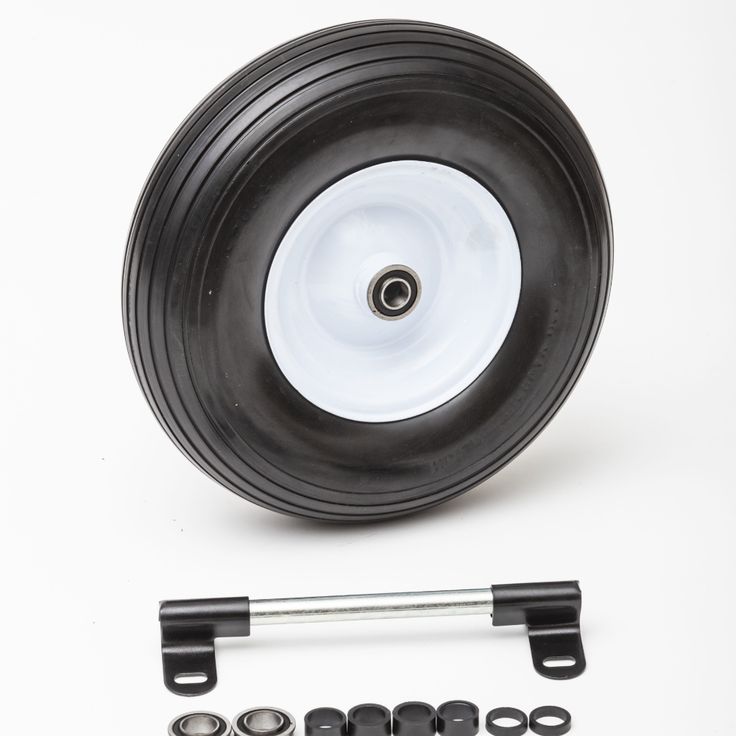 4. Inflate till it pops. 5 reinstall valve stem and inflate .
4. Inflate till it pops. 5 reinstall valve stem and inflate .
B
borgunit
17 years ago
A trick I use is those little ratcheting straps you can buy (to hold down cargo or whatever on a vehicle). Just wrap it around the tire and ratchet it till the "bead" expands out to the rim. A little water helps too. It shows where it may leak and helps the tire to slide and fill in the rim.
H
HotRod
17 years ago
OR if your really stuck, spray in some starter fluid or other flammable aerosol spray and then light it, the pressure of the ignition will seal the tire enough for you.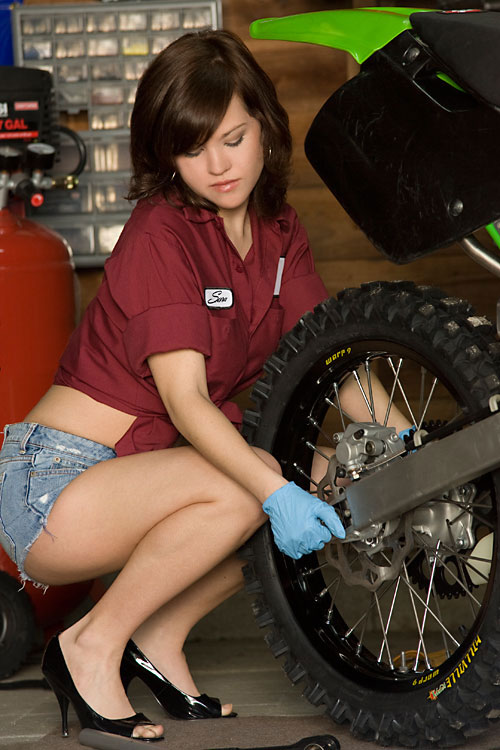 I've seen 4x4 guys use this out in the sticks.
I've seen 4x4 guys use this out in the sticks.
L
longshot
17 years ago
you do realize that a service station would charge you about 5 bucks to do this & it would only take about 3 minutes, right?
W
World Traveler
17 years ago
Been there, done that. Used a belt clamp and a neighbor's shop compressor, which puts out more air than my little battery-powered Campbell Hausfeld inflator. In about two seconds, it seated the bead, inflated the tire, and tore the belt clamp in two. Next time, I'll take the wheel off the wheelbarrow and take it to a local gas station with an air pump that I can control a little better.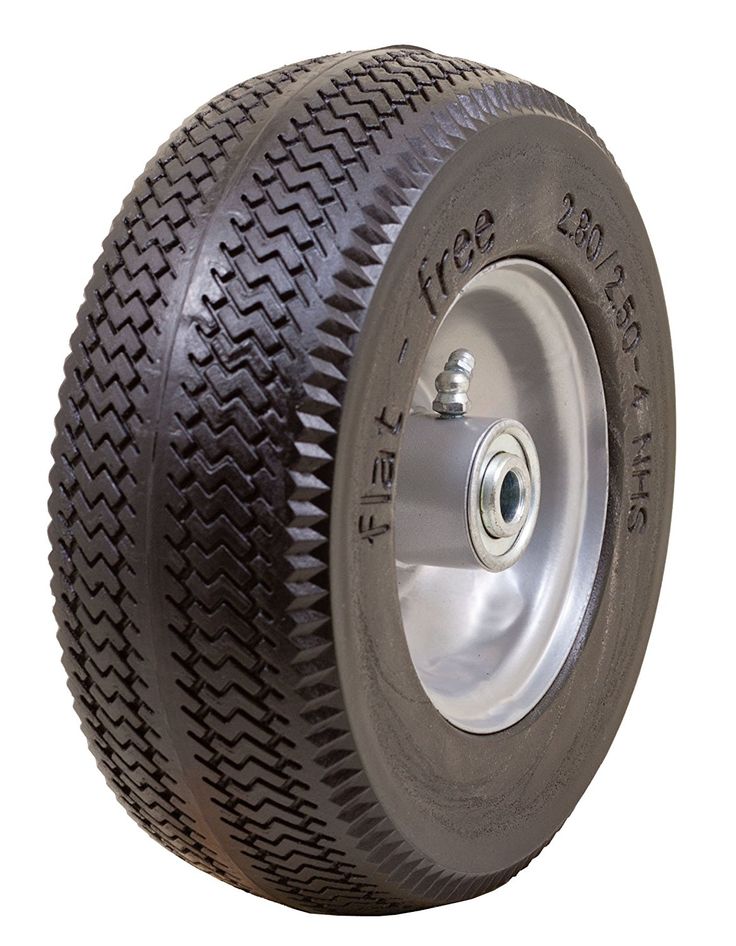 Regards --
Regards --
J
jackjohansson
17 years ago
Use a match & propane... no.. really...
I once saw video on Discovery channel about 4 wheelers in Iceland (of all places) and it showed a really neat trick... when in the outback (so to speak) and they need to re-seat a tire they fill it with propane, (as best they can, obviously with it unseated some leaks out, but they seem to get enough in) then they toss a match at it. It literally explodes into a momentary fireball, but somehow the explosive action is enough to seat the tire. I assume they come back and let Propane out, and replace with air.. but the program was not a detailed how-to, it just showed the video of them exploding the tire back onto the rim. I am not nuts or desperate enough to try it, but it was some pretty cool video.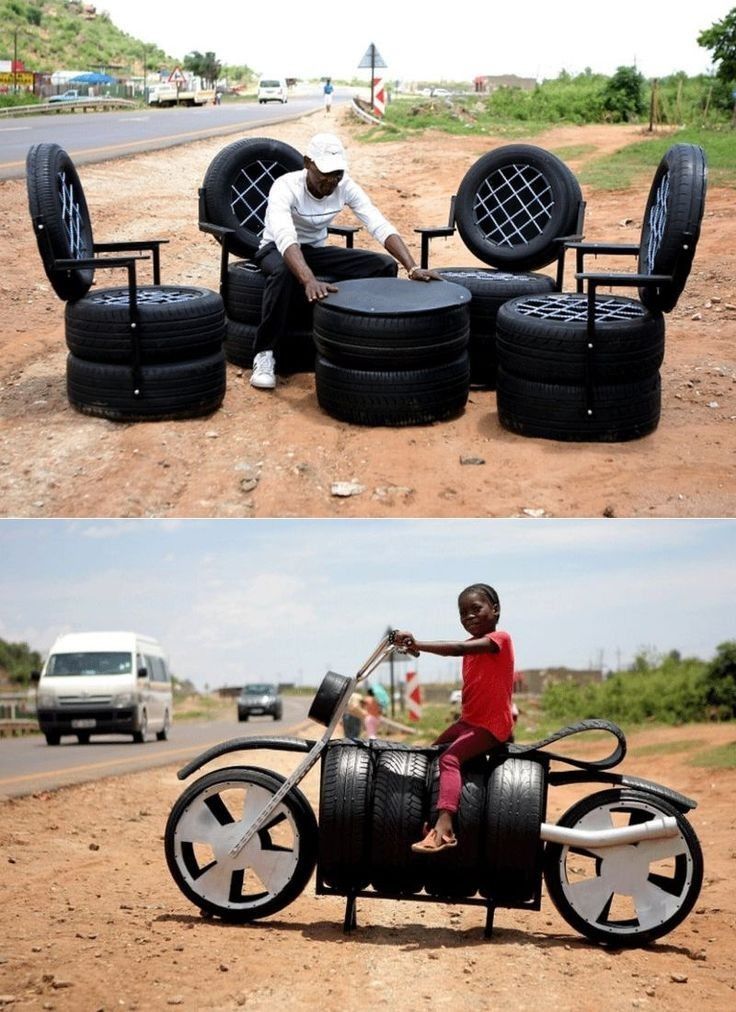 ..
..
S
Stormin Mormon
17 years ago
I had the same problem. I stuffed as many crumpled news papers as I could into the tire, that helped a little.
I think the real answer is go to the tractor supply place and get an inner tube.
S
SteveB
17 years ago
What self-respecting alt.hr'er would do that?
P
Phil Munro
17 years ago
The tire places in our area give better service than that, and will usually help with something like this for $0. 0. --Phil
0. --Phil
H
HotRod
17 years ago
NOPE, I would start with a little propane and work my way up to more, this really does work.
J
Jeff Wisnia
17 years ago
WOWZA! I do believe it, but I wonder who the hell was the mad genius who first thought of trying that?
I wonder if he was someone who had worked with explosive forming of heavy sheet metal, and figgered, "Why not?"
Jeff
H
Hotrod
17 years ago
This is done every day of the world.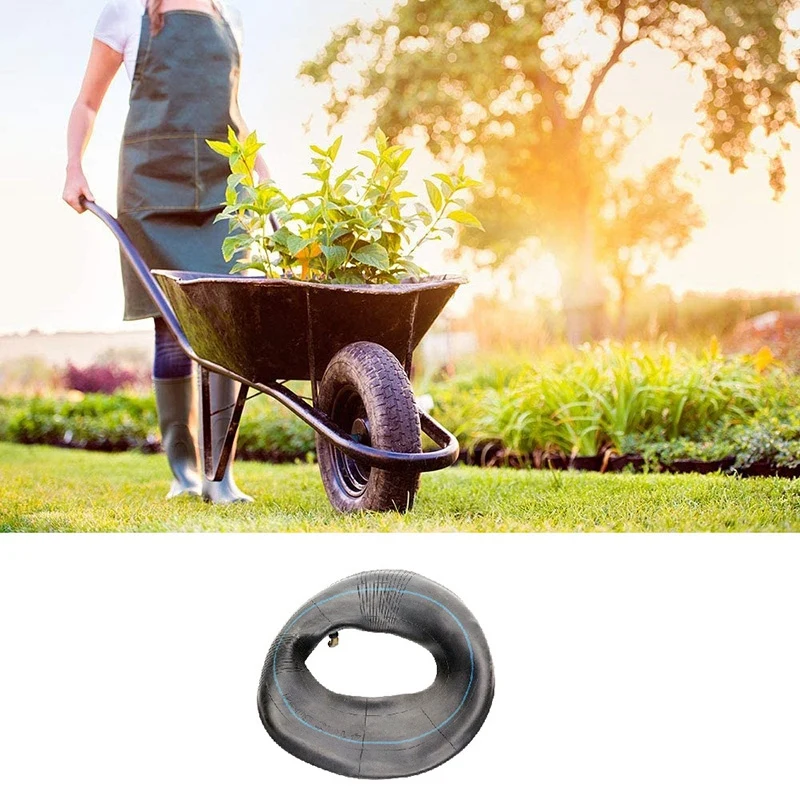 Truck tires are a bear to install on the road without a large air line and bead seating ring. Once you get the tire on and off with spoons, make a couple fast circles around the wheel, inside the tire, with starting fluid. Up and over the tire to the ground. toss a match at it, and POOF! the bead is seated. With over the road truck tires, you still have to add air afterwards. Ask any truck mechanic and he'll tell you he has probably done this before.
Truck tires are a bear to install on the road without a large air line and bead seating ring. Once you get the tire on and off with spoons, make a couple fast circles around the wheel, inside the tire, with starting fluid. Up and over the tire to the ground. toss a match at it, and POOF! the bead is seated. With over the road truck tires, you still have to add air afterwards. Ask any truck mechanic and he'll tell you he has probably done this before.
I
Irving Drinkwine
14 years ago
I have a wheelbarrow that has a tubeless tire. The tire went flat at
some point and sat that way for a while. Now the tire is out of shape
and I cannot get it to hold air.
Any suggestions on how to fix this short of buying a new tire/wb?
Put a tube in it show how perhaps?
Thanks
ID
Loading thread data . ..
..
B
buffalobill
14 years ago
temporarily substitute your wheeled garbage can tote, do not overload.
B
Bob
14 years ago
Had the same problem with a garden trailer tire. I took the wheel & tire to a local discount tire store and they fixed the problem for nothing. Bob-tx
C
Colbyt
14 years ago
You can try putting a rope around the rim and tire and pulling it tight to force the tire into contact with the rim.
You can also take the wheel to a tire store and have a tube added. I think I paid $8 for tube and labor. Haven't had a flat for years now.
Colbyt
P
Phisherman
14 years ago
Tie a rope around the tire and tighten with a tourniquet. Quickly fill the tire with air and it will self-seal.
J
Jim Conway
14 years ago
I have the same deflation problem, but how exactly does the rope get tied? Does it wrap around the circumference of the tire (i.e. the tread if the tire were vertical) or does it get wrapped around the rim and tire together (horizontal if the tire were vertical). Thanks!!!
Thanks!!!
C
Caesar Romano
14 years ago
On Fri, 27 Jun 2008 05:46:14 -0700 (PDT), Jim Conway wrote Re Re: How do I inflate a tubeless wheelbarrow tire that fails to seal:
Yes, wrap it around the circumference of the tire. Even better than a rope is one of those ratchet tie-down belts that they sell in automotive departments. The kind that are used to secure a load in a truck bed or whatever. Wrap it around the circumference of the tire, pull it tight and then use the ratchet to tighten it enough to get the tire against the rim.
H
hallerb
14 years ago
around the tread area, then put something like a tire iron in the rope, twist, reducing diameter of tire add air fast, no slow fill will work.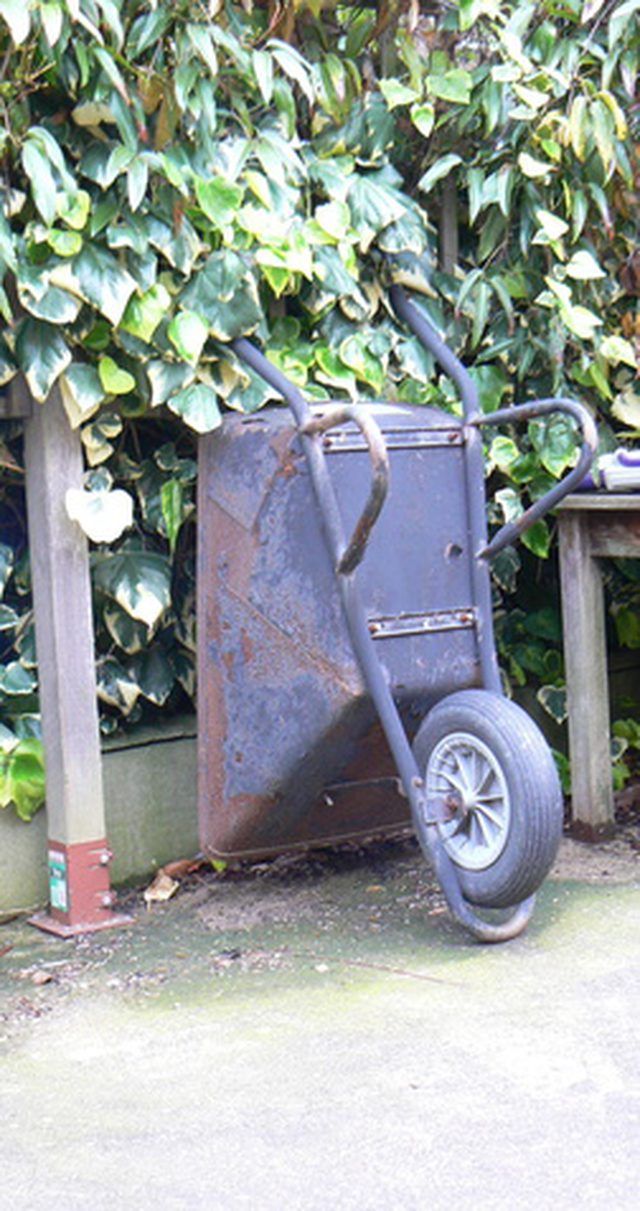
if the tire went flat once it WILL again, add tube at real tire store, for long term hassle free fix
D
dicko
14 years ago
In all likelyhood, you'll need an air compressor to move a lot of air real fast into that tire. A hand pump isnt going to hack it.
-dickm
J
JC
14 years ago
I use "Slime" in all our small equipment tires. It's easy to install and when done right, ends all your inflation/deflation problems for good.
Z
Zephyr
14 years ago
Spray some flamable liquid from a spray can ( wd40 or such) inside the tire, hit it with a match, the expanding air will seal the tire, just be sure not to catch the thing on fire.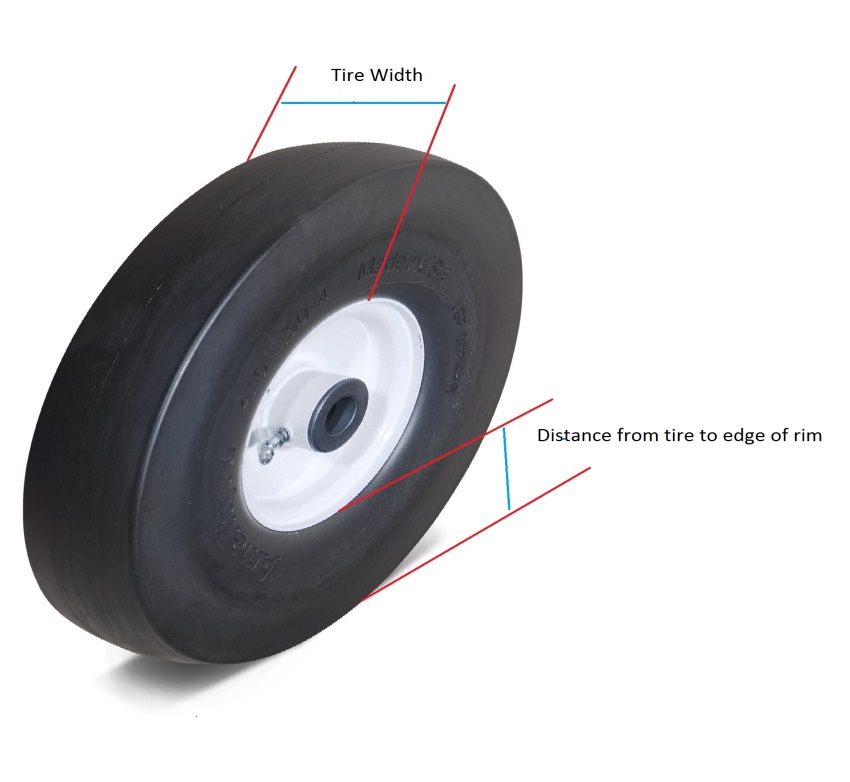 ( ed's note - ive never done this, just heard about it being done)
( ed's note - ive never done this, just heard about it being done)
R
Ralph Mowery
14 years ago
Lay the tire flat on the ground and wrap the rope around it the same as the tread. YOu do not put the rope so thatit crosses the rim, but goes around it the same as the tire. Put the rope in the middle and start tightning it up. The tire will expand the sidewalls and touch the rim. Then you put the air to it.
D
Dan Espen
14 years ago
Others have given advise about repair. In my case, I couldn't get any of those methods to work.
I called the manufacturer for instructions. They took my address and sent me a free replacement. Turns out the tire has a lifetime warranty. Bought the wheelbarrow at HD.
R
RLM
14 years ago
I find that when a small tire goes flat repeatedly it is better to remove the wheel and remove one side of the tire in order to pack the tire with rags, old foam padding from carpeting or anything that keeps the tire from going so flat that it comes off the rim and looses it's seal. Then in the future you can re-inflate the tire when you need it again. I have done this on lawn tractors, yard trailers that I pull with the lawn tractors, a four wheel wagon with pneumatic tires, and a wheel barrow. I don't use them all that often and sometimes when I do the tire is lacking air but is still drivable to the compressor and the bead seal is not compromised to add air.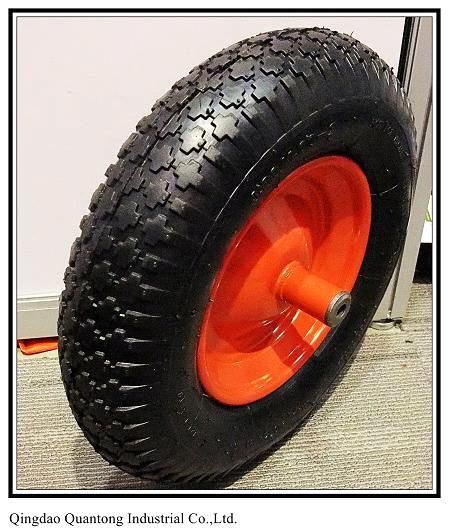
I live in an area where we have sand spurs that are able to put extremely small holes in tubeless tires. I have cleaned the fix-a-flat remains out of tires and know this doesn't hold air for long.
By the way, I have made a hold down tool using all thread rod to hold a small tire tight to the top of my table saw to remove one side of the bead of the tire while I stuff it with rags. So far the rags have held up better on the lawn tractors but the foam carpet padding has worked ok on the wheel barrow because I store it up on it's nose with the handles against the wall so it never has any weight to collapse the tire when flat.
J
Jerry
14 years ago
Ditto that suggestion. I do that at least once a year with my wheelbarrow tire. Wrap the tiedown, rachet it down, fire up the compressor, and I'm good until the next time. If it's being real stubborn, I'll smear some petroleum jelly around the bead on both sides, helps it seal a little better.
If it's being real stubborn, I'll smear some petroleum jelly around the bead on both sides, helps it seal a little better.
Jerry
A
Anthony Diodati
14 years ago
That is a good Idea. Don't try this on a car or motorcycle tire though.............LOL Tony
S
SteveB
14 years ago
Several ways:
Buy a device you put around the tire and inflate with air. If fills up, contracts the tire so it makes bead contact, then inflate.
Make one out of a piece of rope and piece of mop handle.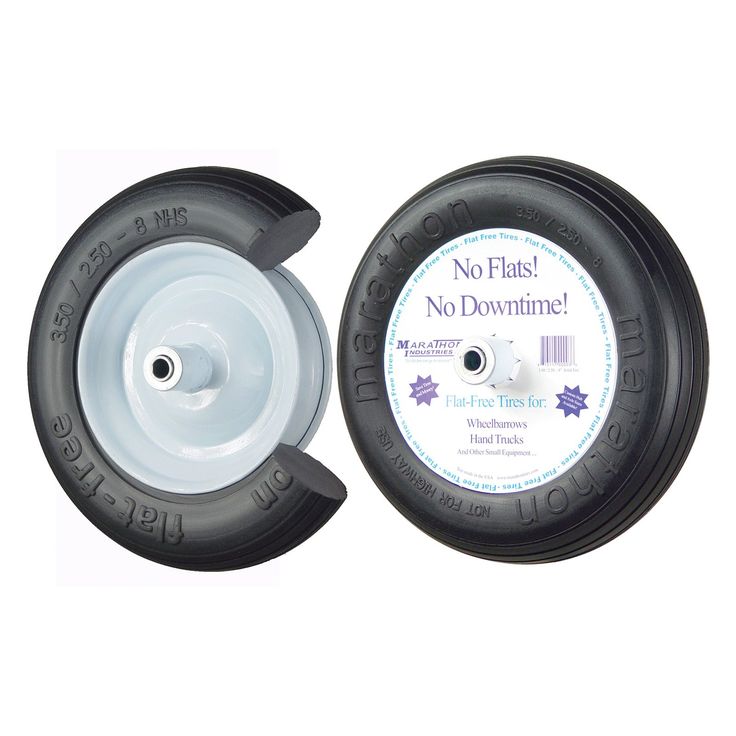 Put around circumference of tire and twist broom handle. Add air with a chuck that bites on the stem and stays there. Twist rope until bead makes contact.
Put around circumference of tire and twist broom handle. Add air with a chuck that bites on the stem and stays there. Twist rope until bead makes contact.
Spray starter fluid at tire and ignite with Bic lighter. Resultant explosion will put bead onto rim and remove excess facial and eyebrow hair.
Use one of those ratchets to squeeze the circumference of the tire until it makes bead contact. If you can find one that short.
Or get one of the pull types that don't have the ratchet.
Steve
S
SteveB
14 years ago
I have the same deflation problem, but how exactly does the rope get tied? Does it wrap around the circumference of the tire (i.e. the tread if the tire were vertical) or does it get wrapped around the rim and tire together (horizontal if the tire were vertical).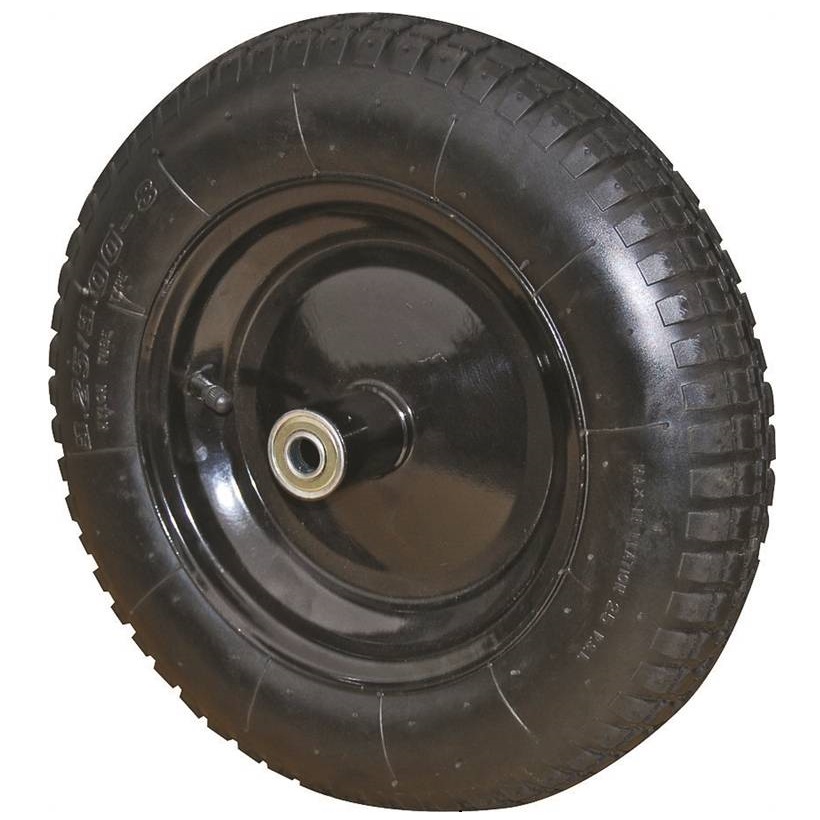 Thanks!!!
Thanks!!!
Put the rope around the biggest part of the circle. Leave an excess loop to put in a handle. Twist handle.
steve
S
SteveB
14 years ago
"Ralph Mowery" wrote
It's easier if you use a chuck that bites the stem, then you don't have to use your third hand to squeeze the air supply.
Steve
S
SteveB
14 years ago
"JC" wrote
What works better than that is a solid rubber tire.
Often, spending very little time, you can avoid additional costs, which are already enough for those who spend the summer in the country and in country houses, taking care of buildings, gardens and gardens. In this particular case, the conversation, or rather, the video sequence, will be about how to bring the wheel of a garden cart back to life in a few minutes. A garden wheelbarrow in the country is never idle: take out the garbage, then bring building materials, then transport the crop. And, of course, with such intensive use, the wheel periodically fails: the tire is punctured, the chamber bursts, etc. But, before you go to the market and buy a new wheel, see how quickly you can disassemble the wheel, patch it, or, in case of significant damage, replace the tube and tire, and return everything to its original form.
We want you to see how easy it is to replace a punctured, cracked, or simply worn tube wheelbarrow wheel . Of course, we do this job every day, and we boarded several hundred thousand of these wheels before we decided to post this video. The video lasts only a couple of minutes, but after watching it and following the simple sequence of actions we perform, you will be spared unnecessary time costs.
Of course, we do this job every day, and we boarded several hundred thousand of these wheels before we decided to post this video. The video lasts only a couple of minutes, but after watching it and following the simple sequence of actions we perform, you will be spared unnecessary time costs.
Wheel mounted on garden wheelbarrow is typically 3.25-8, slightly smaller in diameter than wheelbarrow for construction wheelbarrow .
First you need to unscrew the spool and completely deflate the wheel to make it easier to remove the tube tire from the rim.
Then we insert the new tube into the tire, be sure to carefully straighten it around the entire circumference inside the tire.
Once, on a video about the repair of a construction wheelbarrow wheel, we received a comment from a man in which he assured us that our inner tube with a tire was made of soft rubber, while his was made of oak and it was impossible to do what was shown in the video. So, if you carefully distribute the tube inside the tire before you put all this on the rim, any tire set, of course, if it is matched to the size of the rim, regardless of the softness of the rubber, will definitely fit on the rim.
So, if you carefully distribute the tube inside the tire before you put all this on the rim, any tire set, of course, if it is matched to the size of the rim, regardless of the softness of the rubber, will definitely fit on the rim.
If we don't do it with due diligence, then we won't put the kit on the disk. There is no need to watch how quickly the person in the video does this work, he does it all the time, just pay attention to how carefully the tire set is prepared before putting on the disk.
The next step is to insert the nipple into the hole on the disk and insert the pre-assembled tire kit with the inner chamber with force in a circle.
Inflate the wheel and close the nipple with a cap. That's it!
In the video, we use a compressor to inflate a tire, but it can be inflated almost as quickly with a conventional car pump. Everything else is done exclusively by hand and does not require any improvised means.
And in conclusion, once again I would like to draw your attention to the fact that if something does not work out for you, then this happens not because the rubber is “oak”, but because the sequence of actions is violated.
We often have to bead the wheels in winter, at minus 15. Knowing the properties of rubber, you can easily guess that any rubber will be “oak” at such a temperature, but we spend exactly the same amount of time as in this video.
Wheel bearing replacement
We select a wheel for a garden wheelbarrow
Contents:
A flat tire on a car is always a nuisance, especially if the pressure loss caught the driver not in the garage, but on an empty highway. And it's not always a puncture, because the bleeding of air can occur along the disk. Why the wheel is lowering along the rim and what to do about it, we will analyze in the article.
This problem is quite common with tubeless tires, where the rubber adheres to the disc due to internal pressure.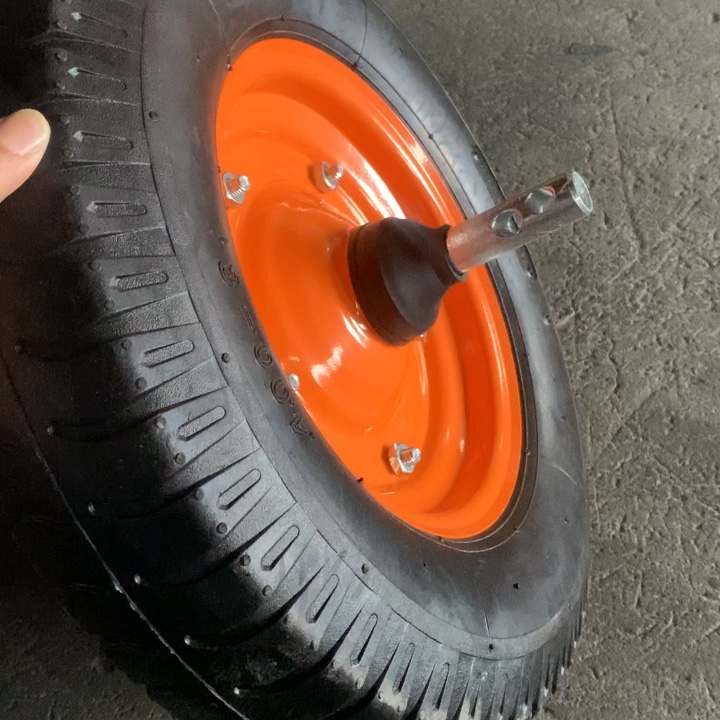 At the junction of the disk and tire, the seal is sometimes broken and air is bled, which ultimately leads to a complete loss of pressure. In chamber tires, the situation is more unambiguous: if the wheel is flat, then look for a puncture.
At the junction of the disk and tire, the seal is sometimes broken and air is bled, which ultimately leads to a complete loss of pressure. In chamber tires, the situation is more unambiguous: if the wheel is flat, then look for a puncture.
Deformation is the main reason. Disc geometry is an extremely important thing for full-fledged work, sometimes even a dent in an insignificant place can be fatal. The car drove into the pit - the disk bent, the tightness of the cord was broken and all the air came out. Low temperatures outside the car, which causes the rubber to harden, is a common cause, especially if tightened with a tire change. Also, due to poor maintenance, improper storage of the prefabricated kit, or constant driving on roads sprinkled with reagents, the disc begins to rust, as a result of which corrosion eats away the metal, forming micro-holes through which air will be gradually etched. Blowing off the wheel can also occur through a faulty nipple.
In the end, the reason that the wheel is going down is the most banal - the rubber is already old and deformed over time, which means it is physically unable to provide the desired density at the point of contact. There is nothing to prevaricate here: the tire urgently needs to be replaced.
There is nothing to prevaricate here: the tire urgently needs to be replaced.
It would seem that since such a disaster does not happen with chamber tires, isn’t it better to give preference to them? Maybe in this sense this is true, but in fact, tubeless has more than one advantage. Here they are:
They have no friction between the tube and rubber, which means that the tire heats up less during long rides.
It is lighter and more reliable, since the chamber version can burst at high speed.
It balances better and holds pressure longer after a puncture.
A hole in the tread may not interfere with the ride at all - a stuck nail will simply not allow air to escape. With a chamber tire, this is impossible, it will be blown away pretty quickly.
Damage to the tread can be urgently repaired with a repair harness. This is quite enough to get to the nearest tire center and change tires.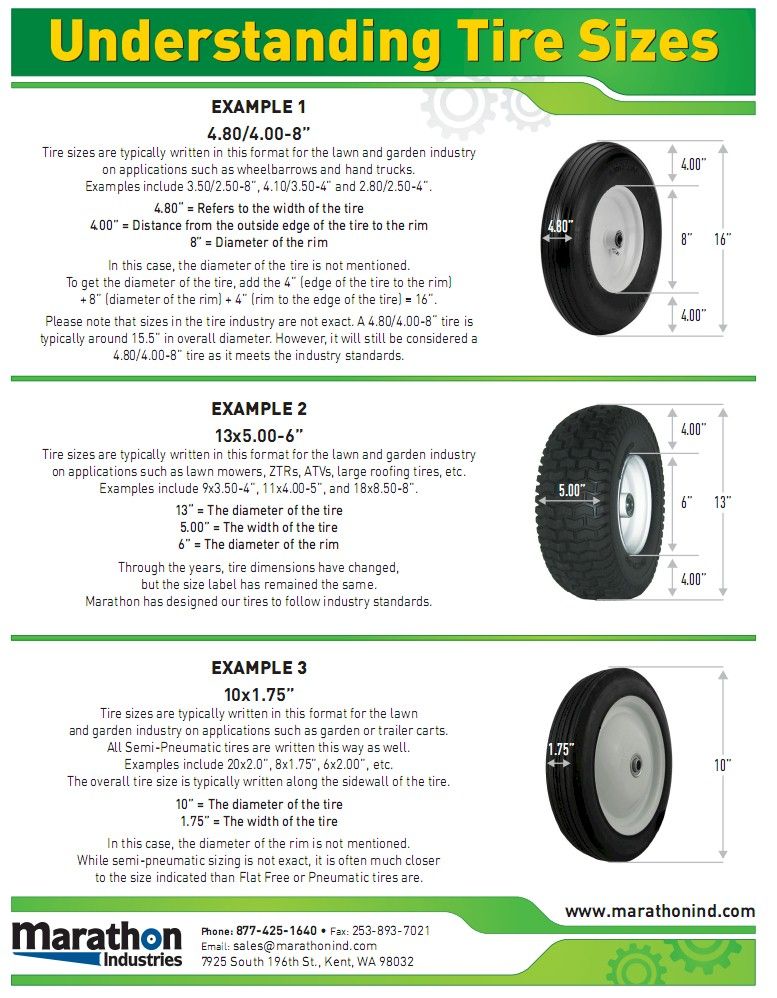
First, make sure that you do not have a puncture in the wheel or that the cause of the trouble is not in the nipple. It is elementary to notice a protruding nail, but it is not always necessary to pull it out immediately and immediately. As we wrote above, a foreign object can simply get stuck in the tread and the air will have nowhere to go. An open puncture is repaired with a tourniquet.
The valve must be smeared with soapy water or simply slobbered - if there are no bubbles anywhere, then it has nothing to do with it. A defective nipple will have to be replaced with a new one.
If the valve is in order, fully inflate the tire and smear the edges of the cord with soapy water. You can do this with a brush or use a sprayer. Air bubbles will tell you that the source of the trouble is in the detachment of the cord from the disk surface, i.e. in violation of the tightness of the tire seat. Metal edges should also be carefully examined - any cracks and welding defects can be the cause of a pressure drop.-Step-3-Version-2.jpg/670px-Fix-a-Wheelbarrow-Tire-(tubeless)-Step-3-Version-2.jpg)
You can eliminate the descent from under the rim like this:
We poison all the air and remove the wheel from the car.
It is best to disassemble it, so it will be much more reliable to fix the problem. In order not to do the balancing again after the procedure, it’s a good idea to mark the position of the nipple with chalk first.
The disk edges will have to be properly sanded with fine sandpaper in places of rust damage and covered with a new layer of paint.
After the paintwork has dried, we put the tire back on and spread the rubber on the places where the cord touches the disk with a special sealant or mastic. Or you can use the soap solution again, but this time cook it much thicker so that it resembles glue in viscosity. And with the help of a simple brush, we go around the entire circumference of the cord on both sides of the wheel.
We inflate the tire with a compressor, pressing the cord against the disk.
So we will eliminate the damage and provide a tighter fit on the seat. The sealing compound must penetrate all micropores and prevent new bleeding of air.
If there is absolutely no time to remove the wheel, and trouble overtook you on the road, it is enough to bend the edge of the cord and also smear the rubber with sealant or soap. This is quite enough to reach the garage or car service.
The described methods are suitable if there was no serious deformation and there are no cracks in places near the mounting holes or there is no damage to the tire cord. In the worst case, you can’t do without rolling a disk in a tire fitting or replacing it. If you have an alloy wheel, then you can fix it, but this is an extremely expensive business, comparable to buying a new one. However, even when repairing at a tire center, rolling a casting does not always help, and it may soon crack. It’s better not to even think about repairing the wheels yourself. A mistake can be costly.